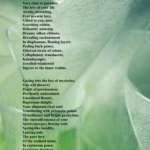We at ReSource were thrilled to be able to visit India, and one of the highlights was our tour of Rajasthan: an amazing place of contrasts (like the whole of India!) where we were privileged to be able to go on a tiger safari. The entire three weeks we spent in India was a source of inspiration and joy – the sub continent has an uncanny ability to draw you out and encourage your personal growth!
About Ranthambore National Park
Once we knew we were going to India in Autumn 2008, we started to look for the most enriching experiences there – and something that really stood out as a must-do, must-see was to go on a tiger safari.
These big cats seen in their natural environment held great fascination, and we found ourselves heading for Ranthambore National Park in Rajasthan, a protected area, one of the few places in India where tigers are still regularly seen, even in the daytime, and are breeding.
Formerly a hunting preserve for the Maharaja of Jaipur, Ranthambore covers an area of 392 sq. km. and is nestled between the Aravali and Vindhya mountain ranges. This deciduous forest was once a part of the magnificent jungles of Central India. The rugged terrain, hills and open valleys with lakes and pools makes it a really romantic and picturesque place to be.
It seems we arrived at just the right time, and that we even had good ‘karma’, according to the locals, as we were able to see several tigers in the course of our three day safari. The excitement of being so close to these amazing creatures was almost indescribable, a real privilege – in fact, quite an emotional experience for all concerned, and something I would recommend wholeheartedly if you have the chance to visit.










